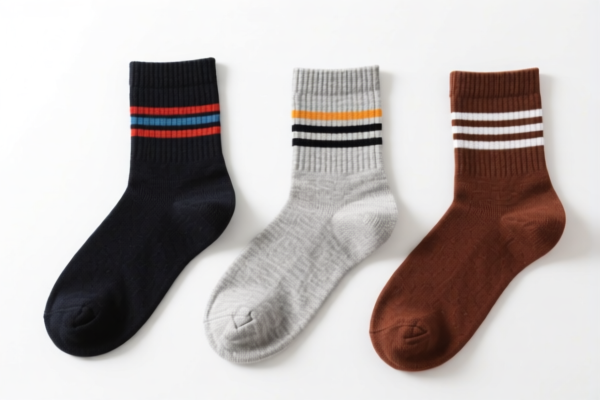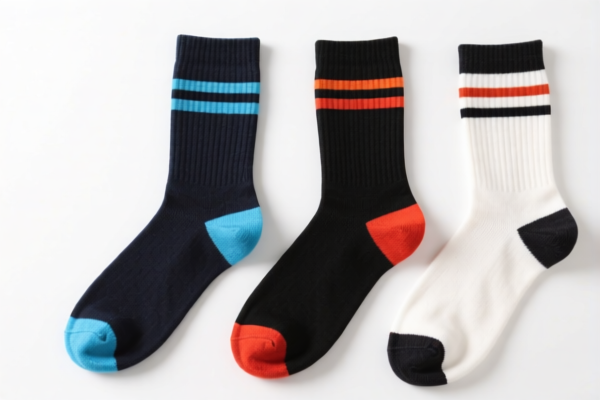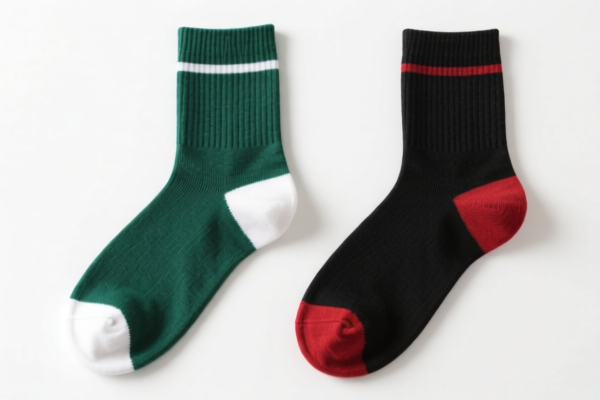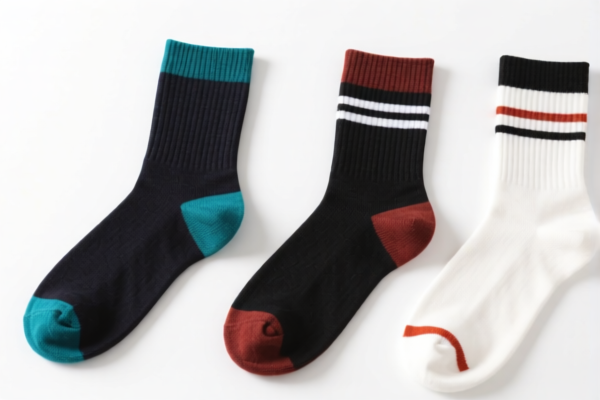| HS Code | Official Doc | Tariff Rate | Origin | Destination | Effective Date |
|---|---|---|---|---|---|
| 6115940000 | Doc | 48.8% | CN | US | 2025-05-12 |
| 6115991920 | Doc | 44.6% | CN | US | 2025-05-12 |
| 6114909070 | Doc | 35.6% | CN | US | 2025-05-12 |
| 6114909030 | Doc | 35.6% | CN | US | 2025-05-12 |
| 6307907500 | Doc | 34.3% | CN | US | 2025-05-12 |
| 6304910120 | Doc | 43.3% | CN | US | 2025-05-12 |
| 6304910140 | Doc | 43.3% | CN | US | 2025-05-12 |
| 9404401000 | Doc | 34.4% | CN | US | 2025-05-12 |
| 9404909670 | Doc | 37.3% | CN | US | 2025-05-12 |
| 3918105000 | Doc | 59.2% | CN | US | 2025-05-12 |
| 3918905000 | Doc | 59.2% | CN | US | 2025-05-12 |
| 3926209050 | Doc | 60.0% | CN | US | 2025-05-12 |
| 3926909905 | Doc | 42.8% | CN | US | 2025-05-12 |




Sensory Sock
A sensory sock is a specialized type of sock designed to provide deep pressure stimulation, often used to support individuals with sensory processing difficulties.
Material:
- Spandex/Lycra: The primary material, offering significant stretch and compression. Typically a high percentage blend (80-90%) for optimal effect.
- Nylon: Often blended with spandex for durability and ease of donning.
- Cotton: Some varieties include cotton for added comfort and breathability, though this reduces the compression level.
- Seamless Construction: Crucially, most sensory socks are seamless or have very flat seams to avoid irritation for sensitive skin.
Purpose:
- Deep Pressure Stimulation: The core function. Compression provides proprioceptive input, which can be calming and organizing for the nervous system.
- Sensory Regulation: Helps individuals manage sensory overload or under-stimulation.
- Anxiety Reduction: The calming effect can reduce feelings of anxiety and stress.
- Improved Focus: By regulating sensory input, focus and attention may improve.
- Motor Planning: Can aid in body awareness and coordination.
Function:
The sock works by applying firm, consistent pressure to the feet and ankles. This pressure activates receptors in the muscles and joints, sending signals to the brain that promote a sense of calm and body awareness. This is based on principles of proprioception – the sense of the body's position in space.
Usage Scenarios:
- Autism Spectrum Disorder (ASD): Common tool for managing sensory sensitivities and promoting self-regulation.
- Sensory Processing Disorder (SPD): Helps individuals with difficulties processing sensory information.
- Anxiety Disorders: Used as a calming aid during stressful situations.
- ADHD: Can improve focus and attention.
- Home Use: Worn during quiet time, bedtime, or during activities requiring focus.
- School/Therapy Settings: Used to support learning and emotional regulation.
Common Types:
- Long Socks: Extend to the calf or knee, providing more extensive compression.
- Short Socks: Cover the foot and ankle, offering targeted compression.
- Compression Levels: Varying degrees of compression are available, from light to firm. The appropriate level depends on individual needs and tolerance.
- Footed vs. Footless: Footed socks provide full foot compression, while footless options allow for barefoot wear.
- Patterned/Solid: Available in a variety of colors and patterns.
- Compression Sleeves: Similar concept, but designed to cover the entire leg instead of just the foot and ankle.
Sensory socks are typically knitted or crocheted garments designed to provide tactile stimulation, often used by individuals with sensory processing sensitivities. Based on the provided reference material, the following HS codes may be relevant:
- 6115940000: This HS code covers panty hose, tights, stockings, socks and other hosiery, including graduated compression hosiery, and footwear without applied soles, knitted or crocheted, specifically those of wool or fine animal hair. If the sensory sock is made from these materials, this code applies. The total tax rate is 48.8%, comprised of a 11.3% base tariff, a 7.5% additional tariff, and a 30.0% additional tariff effective April 2, 2025.
- 6115991920: This HS code also covers panty hose, tights, stockings, socks and other hosiery, knitted or crocheted, but is for those of other textile materials, of artificial fibers. If the sensory sock is made from artificial fibers, this code is applicable. The total tax rate is 44.6%, consisting of a 14.6% base tariff and a 30.0% additional tariff effective April 2, 2025.
- 6114909070: This HS code covers other garments, knitted or crocheted, of other textile materials. If the sensory sock is classified as a garment and made from materials other than those specifically mentioned in other codes, this may be relevant. The total tax rate is 35.6%, consisting of a 5.6% base tariff and a 30.0% additional tariff effective April 2, 2025.
It is important to determine the exact material composition of the sensory sock to select the correct HS code. If the sock contains elastic fibers, HS code 3926909905 (Other articles of plastics and articles of other materials of headings 3901 to 3914: Other: Other Elastic bands made wholly of plastics) may also be considered, depending on the construction and primary material. The total tax rate is 42.8%, consisting of a 5.3% base tariff, a 7.5% additional tariff, and a 30.0% additional tariff effective April 2, 2025.
Customer Reviews
No reviews yet.